
Alpinia zerumbet, commonly known as shell ginger among other names, is a perennial species of ginger native to East Asia. The plants can grow up to 2.5 to 3 meters tall and bear colorful funnel-shaped flowers. They are grown as ornamentals and their leaves are used in cuisine and traditional medicine.

Dongyin Township (Tungyin) is an insular rural township which is part of Lienchiang County, Fujian Province, Republic of China (Taiwan). The islands are in the East China Sea off the coast of Fujian Province, China near the cities of Fuzhou (Foochow) and Ningde. The township is known for its natural environment and Eastern Min culture, for the historical Dongyong Lighthouse and for its military importance and history as the northernmost territory of Taiwan.

Beigan Township, is an insular rural township in Lienchiang County, Taiwan (ROC). The township is in the East China Sea off the coast of Fujian Province, China near Fuzhou (Foochow). Beigan Island, the main island of the township, is the second largest island in the Matsu Islands. Other smaller islands in the township include Daqiu Island, known for its Formosan sika deer, and Gaodeng Island and Liang Island which are off-limits to the public. The native language many of the inhabitants is Matsu dialect which is one of the statutory languages for public transport announcements in the Matsu Islands.
Chen-Yuan Lee, was a Taiwanese pharmacologist and political activist. He is famous for his research on snake venom. He was a recipient of the prestigious Redi Award from the International Society on Toxinology (IST), and was also a former president of the society. He was a former dean of the National Taiwan University College of Medicine. After his retirement from researching, he focused on participating in the Taiwan independence movement and many democratic movement. Lee had founded many political organizations such as the "100 Action Union" (100行動聯盟), Foundation of Medical Professionals Alliance in Taiwan. He was also the first chairperson of the Taiwan Independence Party.

The Seediq are a Taiwanese indigenous people who live primarily in Nantou County and Hualien County. Their language is also known as Seediq.
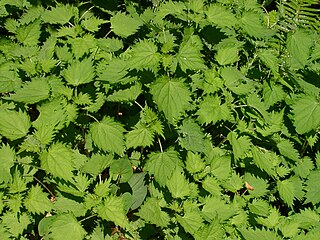
Urtica thunbergiana, also known as the Japanese nettle or hairy nettle, is a species of perennial herbs in the family Urticaceae. It is found in Japan, China and Taiwan. The habitat of the species is moist forests in the mountains. It is in flower from July to September, and its seeds ripen from August to October. The larvae of Vanessa indica, a species of butterfly, are known to feed on U. thunbergiana.

Acer kawakamii is an Asian species of maple, found only in Taiwan. The species is sometimes confused with another Taiwanese tree, Acer morrisonense. This species has been known to reach 20 metres tall. Leaves are non-compound, the blade narrowly ovate, up to 11 cm long by 4.5 cm wide, with serrate margins but no lobes.

"The Torment of a Flower", also known as "Rainy Night Flower", is a 1934 Taiwanese Hokkien song composed by Teng Yu-hsien and written by Chiu Thiam-ōng.
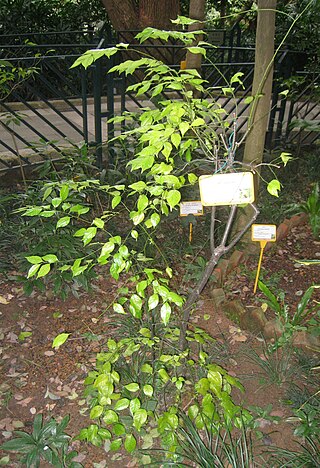
Ilex asprella, also known as rough-leaved holly and plum-leaved holly, is a deciduous shrub native in South East Asia. Ilex asprella is one of the few deciduous species in the family Aquifoliaceae.
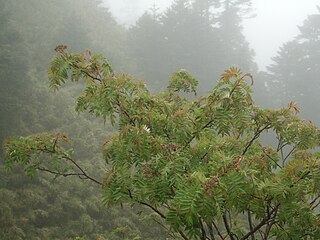
Sorbus randaiensis is a species of deciduous tree in the family Rosaceae. It is endemic to the mountain areas of central Taiwan, with altitude 1,800m to 3,200m, mostly spotted in the forest of Xueshan, Hehuan Mountain, Mount Xiluan, and Nenggao Mountain. It is a tree 3–8 m tall with white flowers and reddish fruit.

Berberis morrisonensis, commonly known as Yushan barberry (Chinese:玉山小檗) or red fruit barberry (Chinese:红果小蘖、赤果小蘖) is a perennial deciduous shrub belonging to the genus Berberis and endemic to Taiwan.
Philosophy in Taiwan is the set of philosophical traditions in Taiwan, while Taiwanese philosophy is taken to mean philosophical work from the country. Philosophical thought in Taiwan is diverse, drawing influence from Chinese philosophy during Qing rule from the 17th and 18th century, and Western philosophy through the Kyoto School during Japanese rule in the 19th and early 20th century. Taiwanese philosophy took a more endogenous turn during the modern era, with burgeoning philosophical debate regarding Taiwanese Gemeinschaft.
Chang Yi was a Taiwanese film director.

Rhododendron kawakamii is a plant endemic to Taiwan. It is also called Kawakami's rhododendron, as the type specimen was collected by Takiya Kawakami and others from Mount Niitaka. This species is the only native, epiphytic, yellow flowered rhododendron in Taiwan, and is scattered in the fog forest belt of the island at an altitude of about 1,500 to 2,500 m. It was first published as a new species by Bunzo Hayata in 1911. The wild community was assessed as "near-threatened" in the Taiwan Red Book of Vascular Plants in 2017.
Rubus swinhoei is also known as Swinhoe's raspberry, wood berry, Keelung rubus, Jingbai rubus and Libai rubus. It belongs to the genus Rubus of the family Rosaceae and is named after Robert Swinhoe for his contributions to Taiwan’s fauna and flora.
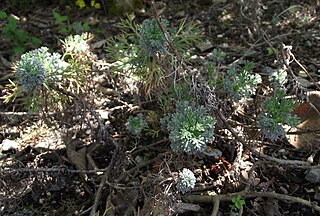
Artemisia kawakamii, commonly known as Kawakami's mugwort, is a plant in the Artemisia genus under the Asteraceae family that is endemic to Taiwan. The plant is distributed on the Taiwan island, growing at elevations from 2,700 to 3,300 m. It is commonly found in gravelly, open, and arid slopes. The species has yet to be cultivated.
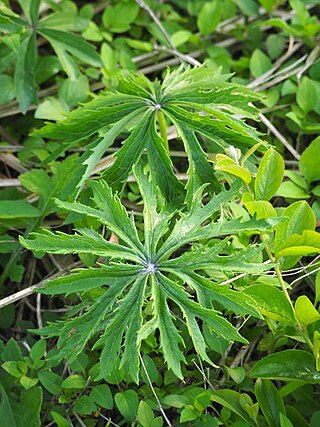
Syneilesis hayatae is one of two Taiwanese endemic plants in the genus Syneilesis, it is known as the Taiwan rabbit umbrella. Compared to the relatively stable population of Syneilesis subglabrata, this species was once thought to be extinct due to the lack of collection records for over half a century after World War II. In 2008 that the species was rediscovered in the lowland grasslands of Miaoli. Due to its small population size, the species was listed as “Critically Endangered (CR)” in the “Red List of Taiwan Vascular Plants, 2017.”
Aster formosanus is a species of flowering plant in the family Asteraceae, native to Taiwan, and Zhejiang, China. An uncommon perennial reaching 80 cm (31 in), it is found in well-lit situations in mixed deciduous/coniferous forests at elevations from 1,400 to 2,700 m. Preferring sandy, damp soils, it often appears on paths and roadside verges.
Stars Gathering is a Mandarin-language singing variety show that has been broadcast by Taiwan Television Enterprise, Ltd.(TTV) since its inception on October 10, 1962. The producer was Guan Hua-shi, and the host was Shen Chih. It was the first TV singing program in Taiwan's television history if the programs during the trial period were excluded from the calculation. The show underwent three name revisions, initially known as "Music and Dance – Stars Gathering" (音樂歌舞——群星會), followed by "Mandarin Songs – Stars Gathering" (國語歌曲——群星會), and eventually "Stars Gathering".
Lin Pey-Chwen is a Taiwanese artist known for her career spanning over three decades, focusing on contemporary art, including women's art, installation art, and digital art.














